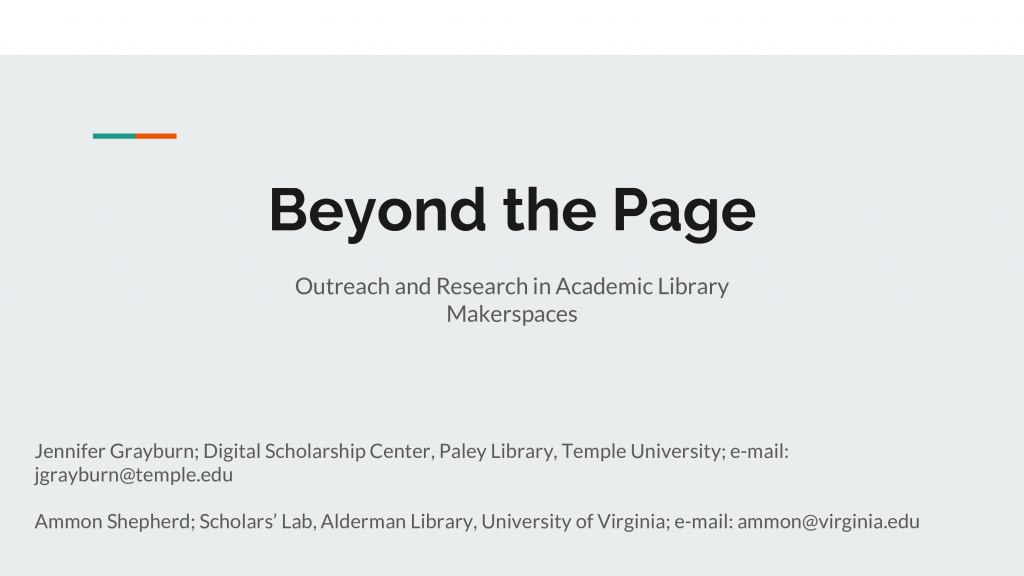ISAM 2017: Libraries are for making
I recently participated in the International Symposium of Academic Makerspaces. I presented a paper, co-authored by Jennifer Grayburn (formerly a Makerspace Technologist, and now at Temple University’s Digital Scholarship Center). I present here the slides and talking notes of the 7 minute presentation, and a link to the full paper [Link to PDF].
Good morning, and thank you for coming. My name is Ammon Shepherd. My paper, co-authored by Jennifer Grayburn, looks at how libraries are uniquely suited to provide makerspaces for traditionally book-bound disciplines.
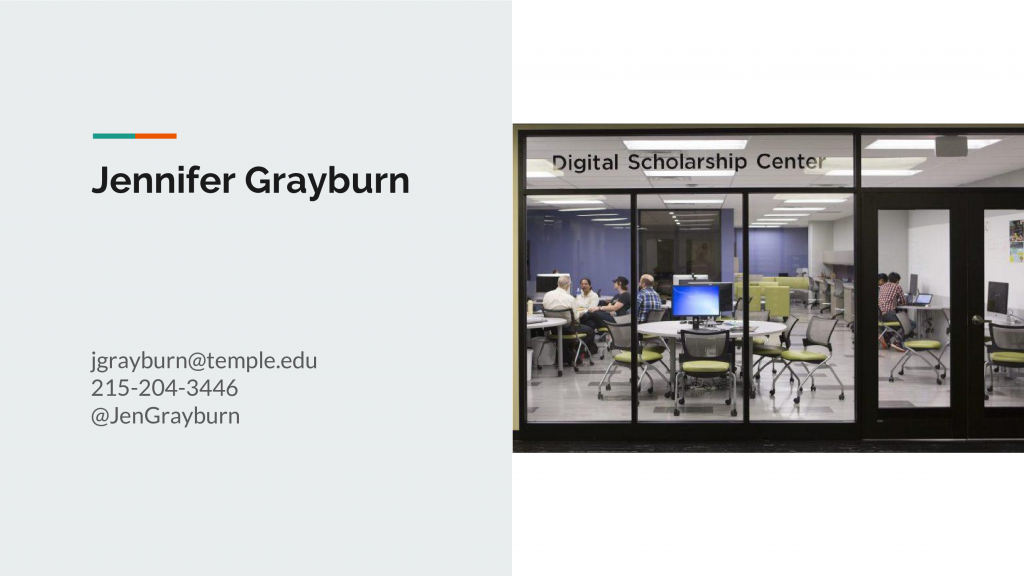
Jen Grayburn works at the Digital Scholarship Center, located in Paley Library at Temple University in Philadelphia.
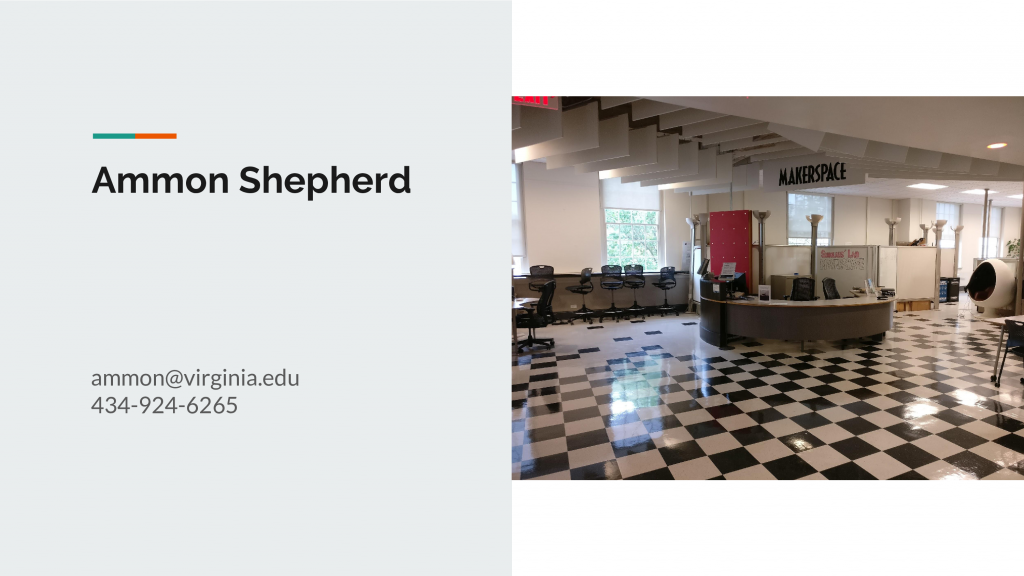
I am located at the Scholars’ Lab in the Alderman Library at the University of Virginia in Charlottesville, Virginia. We both come from humanities backgrounds, so this paper is light on empirical research and heavy on anectodal evidence, but we are both working on tracking data and analyzing that with research questions in mind. To wit, our main question we sought to address with this paper is, How can we get more humanities researchers into our library makerspaces? In the paper we posit that libraries fulfill a unique roll at universities because they are typically departmentally agnostic. Libraries, in general, cater to all faculty, staff, students, and even members of the community.
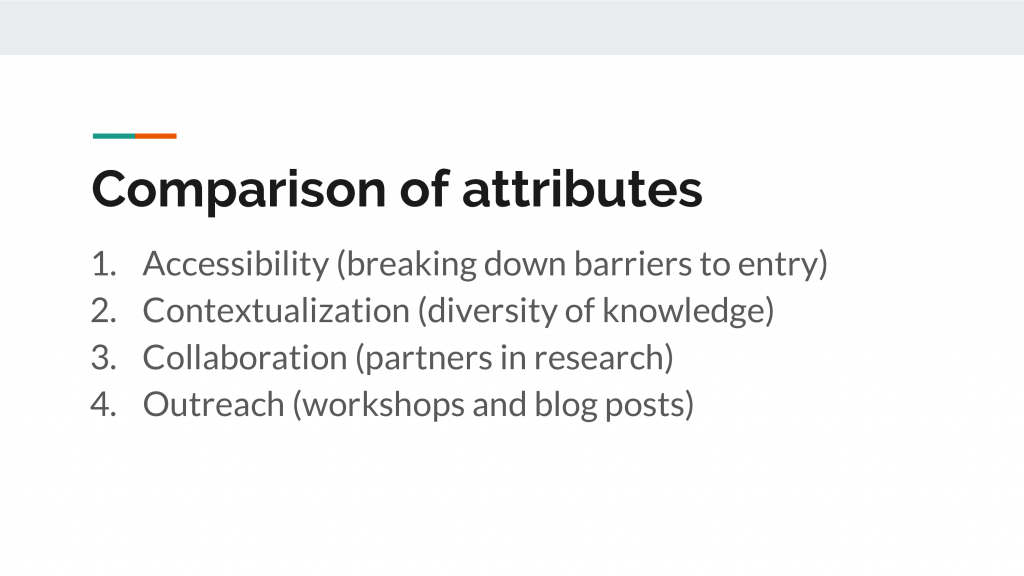
With that in mind, Jen and I looked at both of our spaces (Yet Another Cross-space Comparison) and found four comparable attributes of how we attract and support research from humanities researchers. In this paper we look at four attributes:
-
accessibility,
-
contextualization,
-
collaboration,
-
outreach

Both our spaces seek to piggy back on the aforementioned phenomenon of Libraries as an academically neutral space. But adding technology normally only seen in the STEM fields proves to be a mental barrier to humanities researchers.
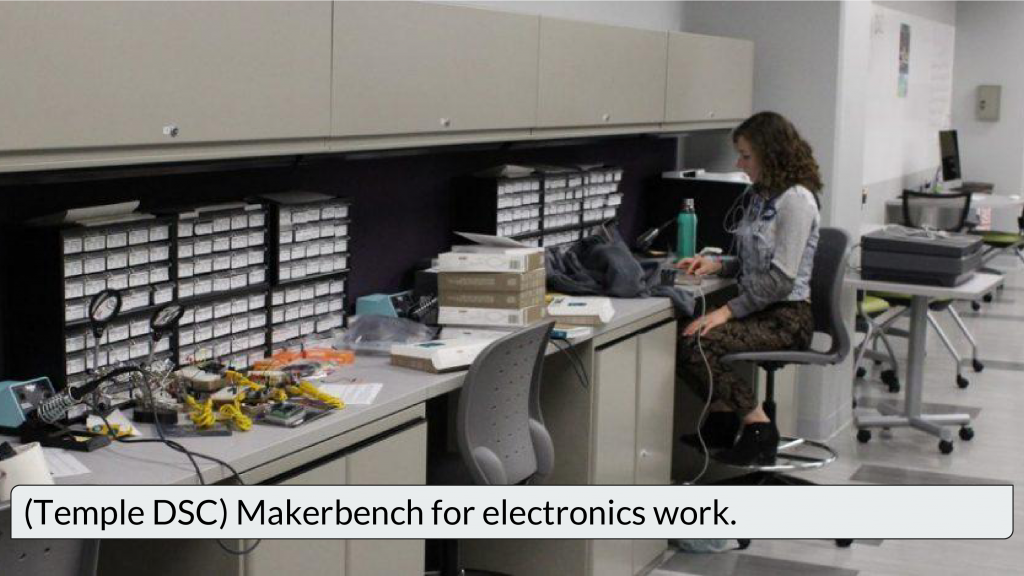
To address this, both spaces first sought to break down any physical barriers to entry. We are both located in open spaces in the main library on campus.
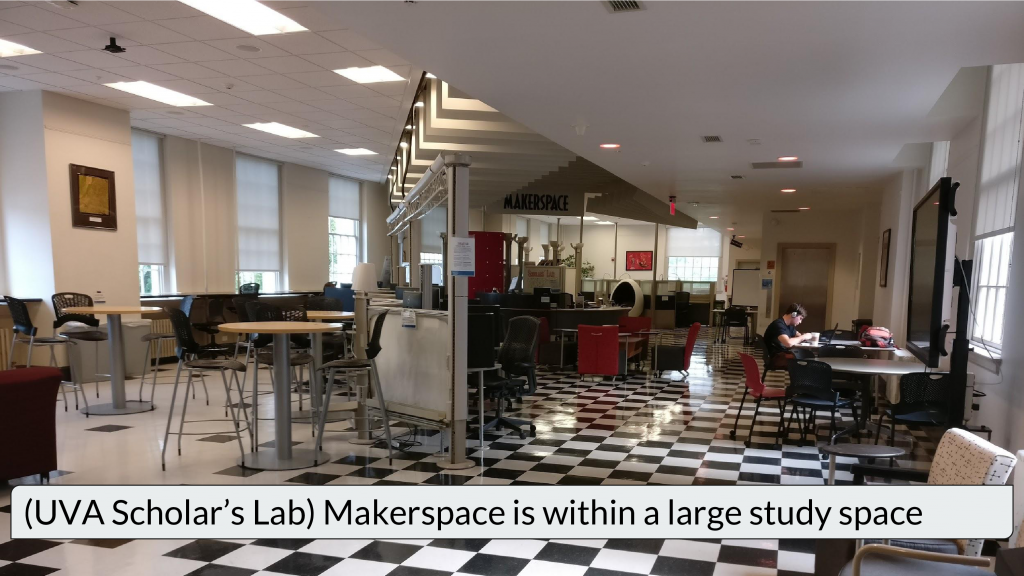
The Scholars’ Lab space is in a prime study and group-work area with great natural lighting. Physically open access is relatively easy to address, but mental barriers take more detailed planning. The remainder of the comparison points, and some take aways at the end, help to address the issue of breaking down mental barriers.

The major issue facing humanities research is the mental frustration with technology; usually the reason they give for picking the humanities in the first place. How then to ease that burden?
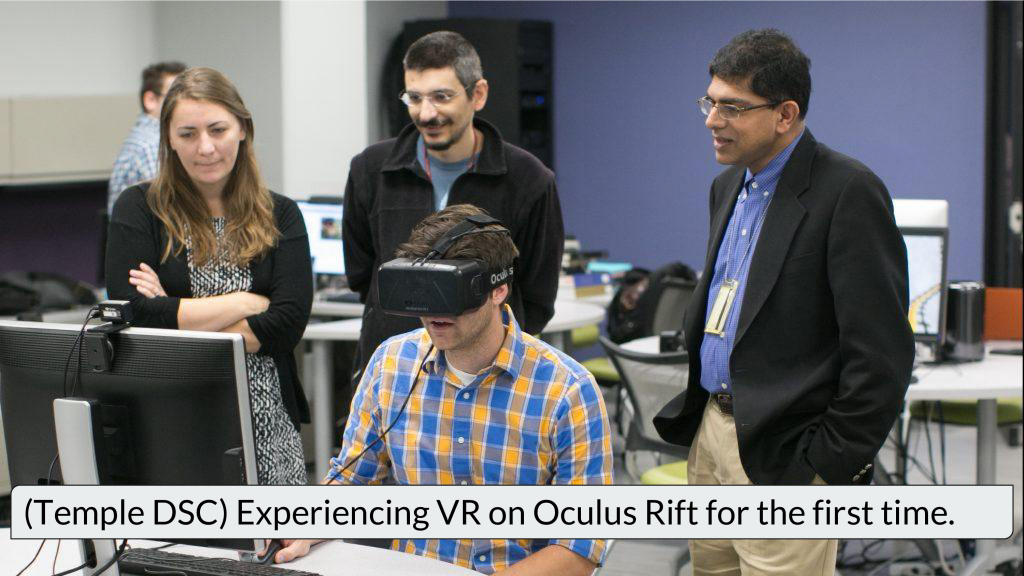
Both the DSC and SLab are staffed with individuals from very diverse backgrounds and skill levels. The DSC has full-time library staff, post-docs and graduate students from departments ranging from science, architectural history, and engineering to business.
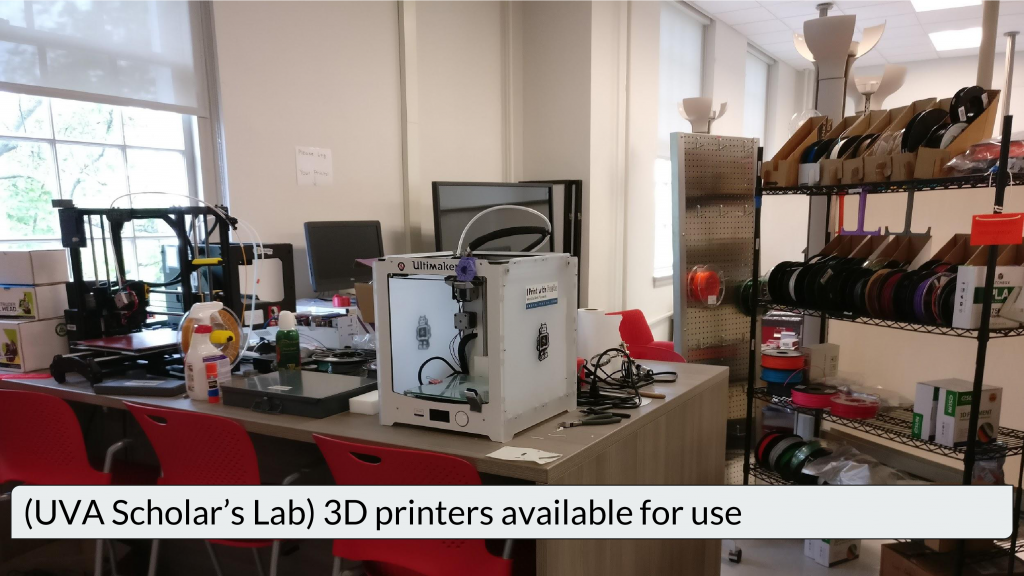
The SLab has 3 full-time staff with library and history degrees, and graduate and undergraduate paid, part-time student employees from language, engineering and chemistry backgrounds.
This broad academic background encourages students from all fields to use our spaces. One anecdotal account comes from a bio-med student who felt more comfortable prototyping in our space because she didn’t feel an inferiority complex. She probably thought, they’re just historians, what do they know? :)
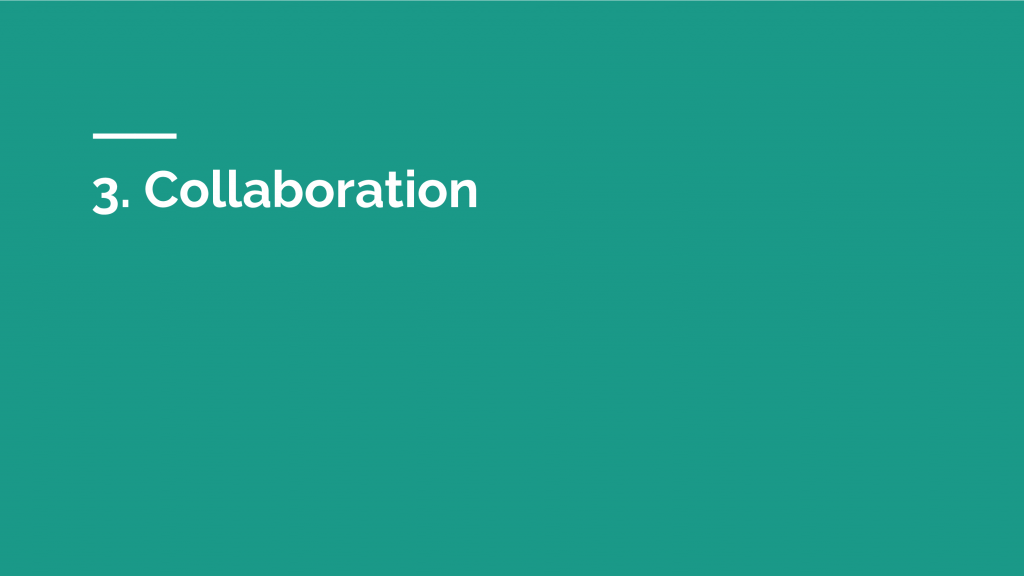
Encouraging collaboration enriches both staff and users, and both spaces encourage staff to work on personal research and collaborate with others.
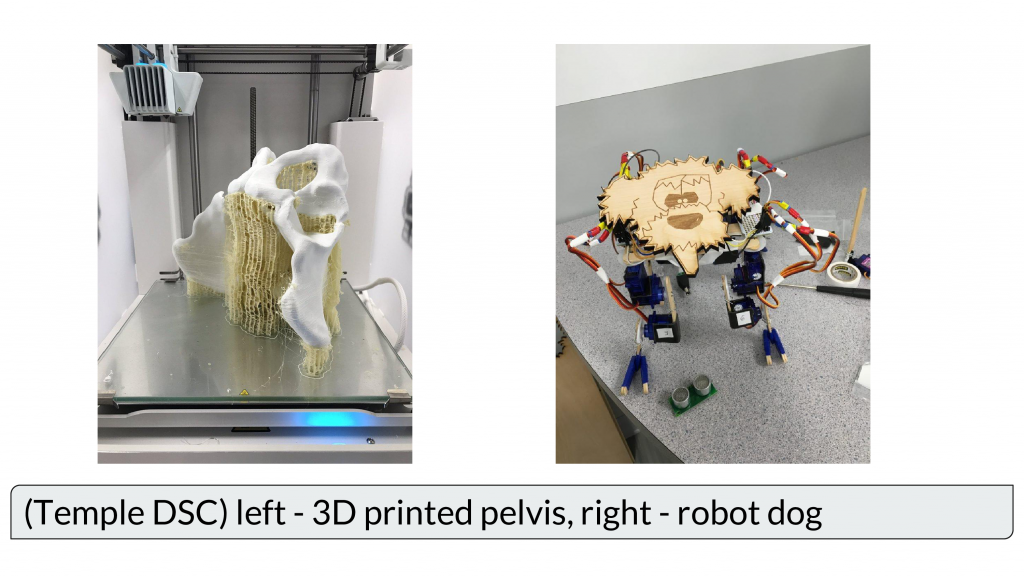
The DSC partnered with the Ginsburg Library to offer free 3D printing for research, educational or clinical purposes. The 3D print of a pelvis from a CT scan is such a result. They also partnered with the Center for Advancement of Teaching to provide grants to faculty ranging from $500-$3500.
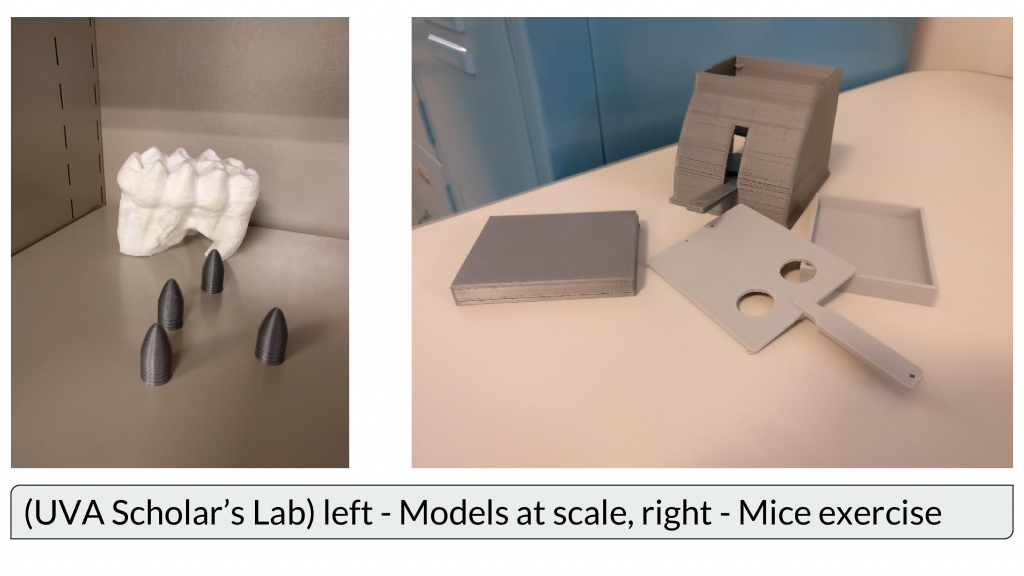
The SLab provides short term fellowships to humanities grad students for prototyping ideas. We have provided support for students to use 3D prints for presentations, and are helping a cardiovascular medical researcher print exercise equipment for mice. More examples are in the paper.
Collaboration with all departments expands the usefulness of the space beyond the physical location and engages the entire university, even humanities scholars.

Finally, outreach plays a major role in attracting any makers, especially interested humanities scholars.
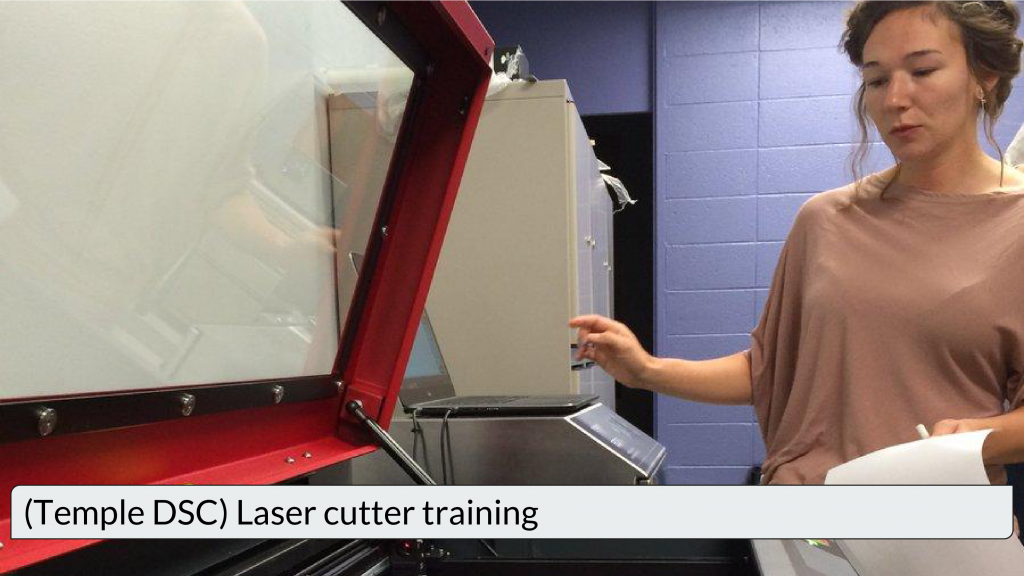
The DSC provides workshops and training for all their equipment.
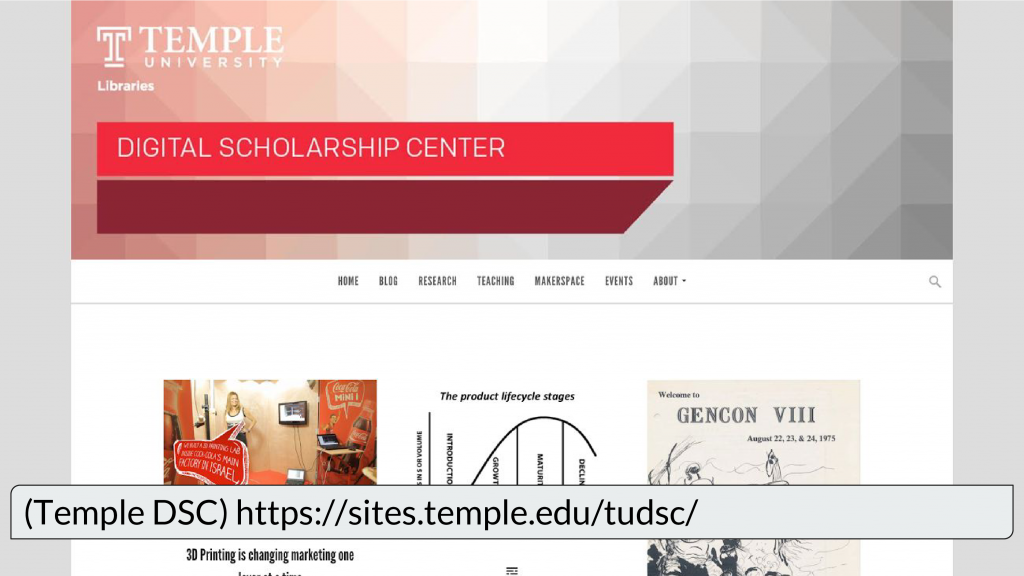
They also encourage staff and users to blog about successes and failures, and to publish results in journals.
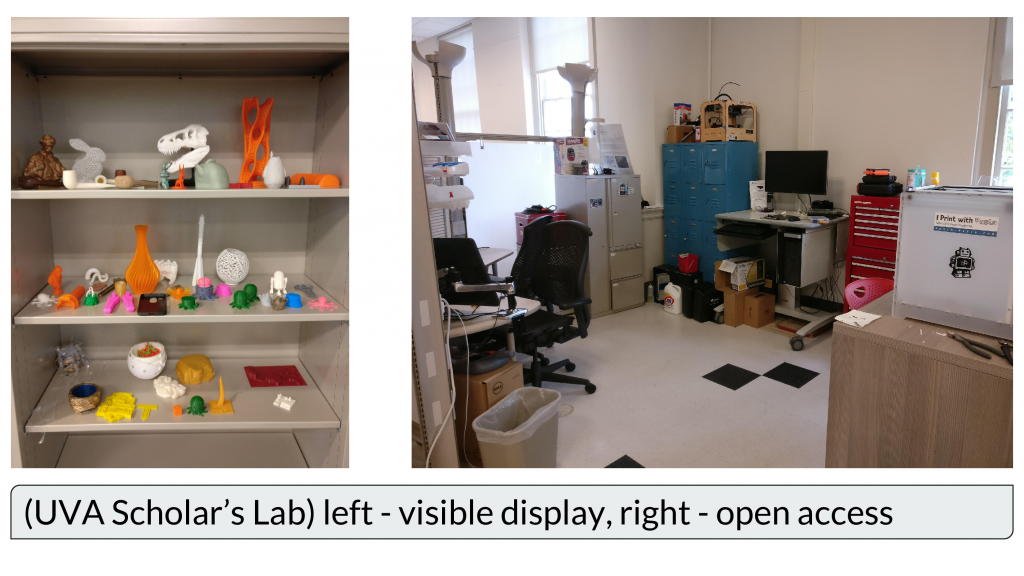
The SLab holds workshops, has a prominent display case, and is a major stop on all the mandatory freshman library tours.

We also encourage users and staff to post their making on our blog. Publishing about the making, both successes and failures, encourages others to try; especially humanities researchers who may be afraid to fail.
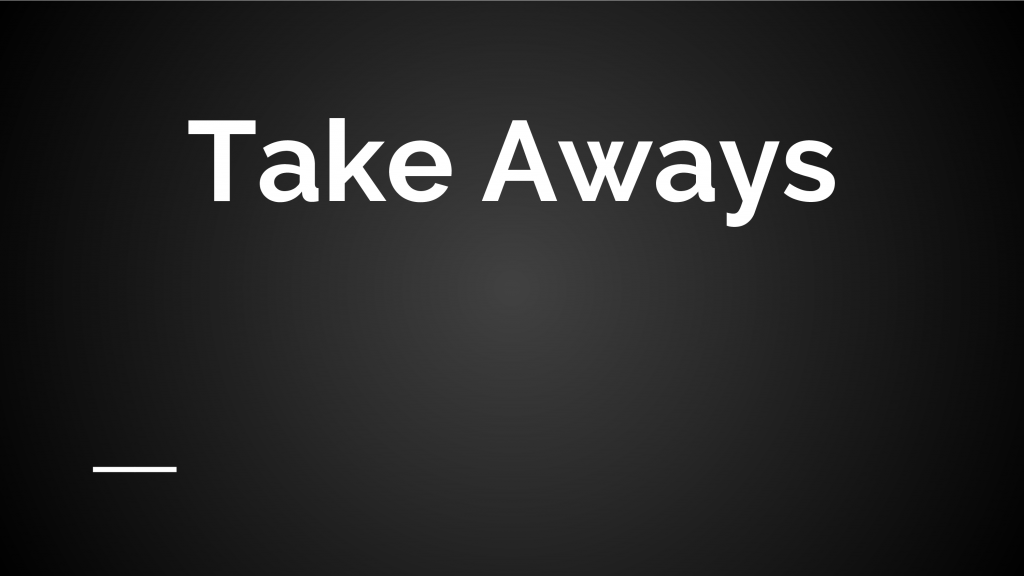
I would like to conclude with four take aways that can help libraries make their makerspaces more approachable to humanities researches.
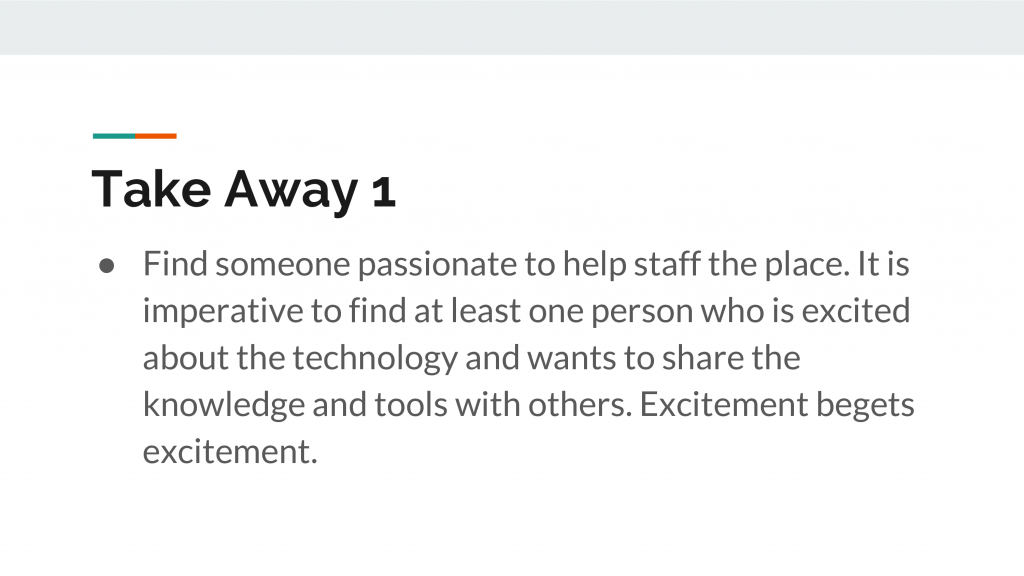
1st, have a passionate staff person in the makerspace. Skill level is less important, you can hire out or encourage student volunteers to bring in skill. But without excited library staff support, the space will flounder.
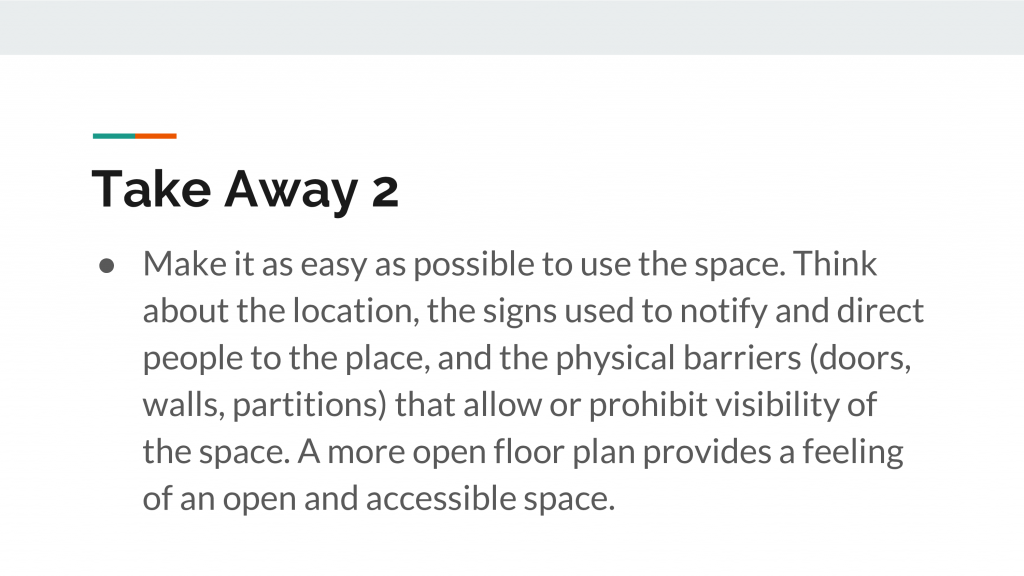
2nd, make the space physically accessible. Also think about how you can address mental and social barriers.
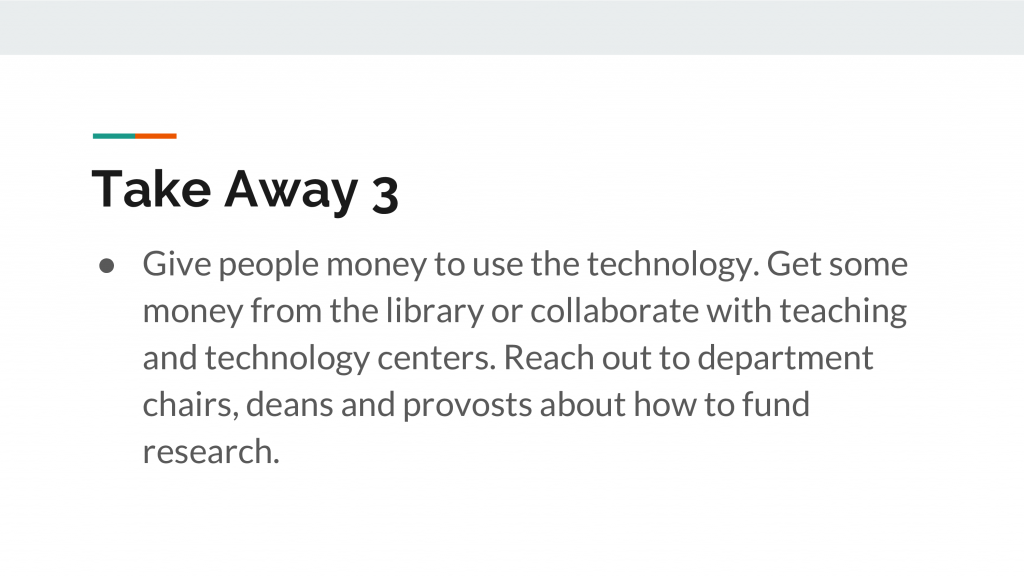
3rd, provide incentives to use the technology and space. Team up with Teaching and Learning centers. Provide free supplies and/or money.
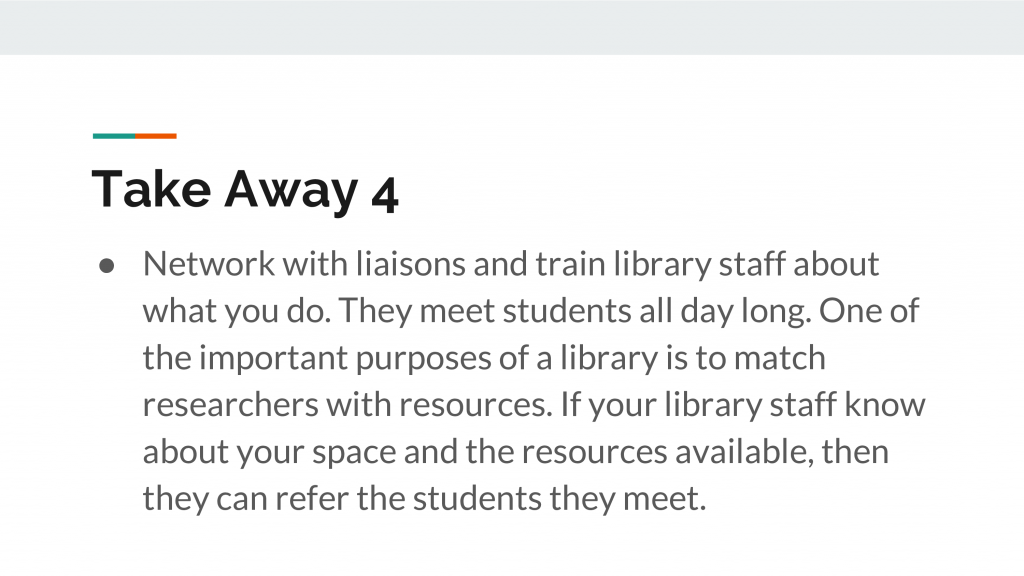
Finally, use your library liaisons. They know your faculty and students, and they can proselytize the space. Bring them in for training on the equipment. Work with them on projects so they know what the space can provide and the tools can do.

